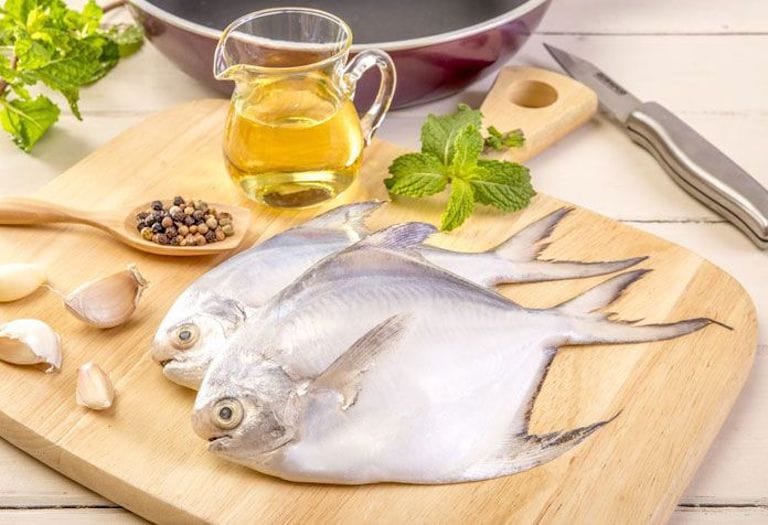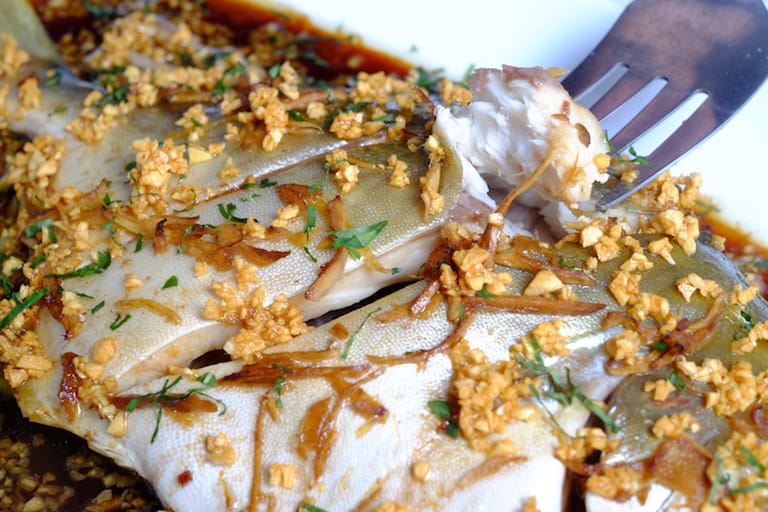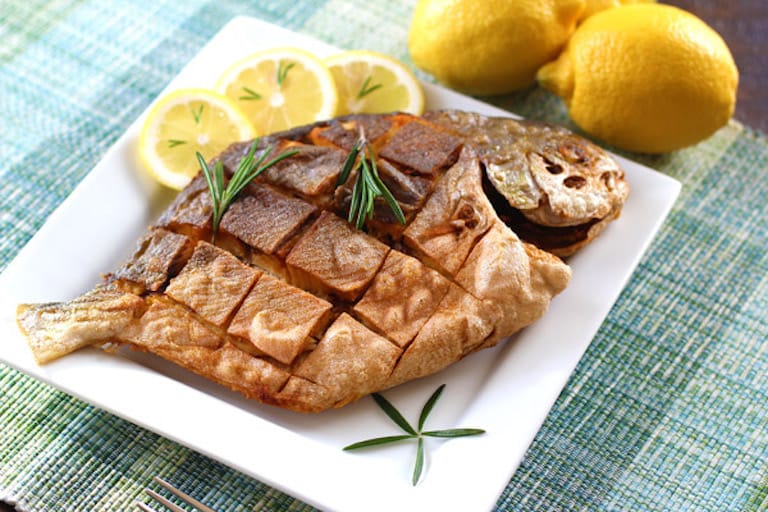The return of the mighty pompano; also known as the Golden or Florida Pompano first became a rage in the ‘60s after being popularized by Mr. Grove and the cause of the Florida Syndrome.
Don’t worry; it’s not health related.
Instead, a rather lucrative proposition for the extremely aromatic and versatile fish.
The fish is arguably a tasty delight among chefs and diners which is partly due to its clean firm taste and nutrient rich fat content without the oiliness of a bonito or mackerel.
Pompano has a rich mild flavor that is sweet and delicious which makes it the first choice among Creole cooks.
Additionally, the head of the Pompano has an oily taste that makes it suitable for sautéing, broiling and making soup.
The whole fish is edible thanks to its soft tender bones and is both lean and light which makes preparing it easy and a great option for those who want to eat healthily.
So What is Pompano Fish?

Most of us have enjoyed the heavenly tasting Triggerfish, Tuna, Salmon or Trout and although we have our reservations about seafood, it seems the Pompano has become quite the favorite among foodies and chefs alike.
Pompano fish belong to the Trachinotus genera with a variety of species likes the Florida, African, Irish and Cayenne species. The name Pompano has been used to generically categorize the different species in the family called Jacks (Carangidae)—because they put up a big fight.
Pompanos are colorful sea creatures with a bluish-green back, a yellow tinge belly, and distinct silver sides. Pompano is technically a round fish but appears as flatfish because of its narrow body and small mouth. Interestingly enough, you don’t have to scale the fish since it has tiny scales.
They measure between 16 to 25 inches lengthwise and are commonly found in large numbers in the temperate regions of Gulf Shores, in oyster banks, sandy beaches, and grass beds. They weigh up to 2lbs with larger species like the Permit (Trachinotus falcatus) weighing up to 50lbs.
Pompano spawns off the eastern Florida shore between March and September, with the adult fish migrating to the Bay area around the same time. Being voracious feeders, their wild menu consists of shrimp, tiny fish, and mollusks.
The most preferred Pompano is the Trachinotus carolinus and is also the most expensive due to its palatable texture, fat content and rich flavor. The pompano is a premium fish with a fine texture that ranges from white to pearly white and typically baked, grilled or pan-fried.
What Does Pompano Fish Taste Like?
The majority of people who love pompano do so because of its savory taste, visual attractiveness and that it works beautifully with acidic flavors, citrus, and herbs that remove that fishy taste. Moreover, its versatility allows it be paired to Sicilian and Asian cuisines like Kimchi and Miso soup.
When it comes to the texture of Pompano, it has a thick firm white flesh with a translucency that is pearl whitish. The meat of the fish is easy to chew and is suitable for individuals who are health conscious. It’s also heart-friendly being a rich source of fatty acids, Omega 3, like most fish.
The silvery sides of the fish are quite tasty and very edible since Pompano don’t require to be scaled. Even though pompano fish are firm in texture, filleting the fish is quite easy, and after you cook it, the thick pearly-white flesh is transformed into a slightly thicker whitish flesh.
Pompanos are popular because of their delicate and palatable taste. The flesh of the pompanos tastes mild with a dash of sweetness topped off by its refined texture and succulent thanks to the moderate fat content.
Furthermore, many chefs consider it a “clean-tasting fish” and reckon its sweetness is what makes it versatile and can be used in many dishes. Pompano tastes a lot like mahi-mahi, mullet, and snapper and so you can easily use it as a substitute for these delicious dishes.
Pompano critics describe that the fish tastes “fishy.” On the taste chart, the Pompano has a mild flavor texture that is firm and tender, close to that of a beef steak but not too close. When it comes to the nutritional content in Pompano, it’s more nutritional than your typical whole fish and has zero carbs.
It’s an excellent source of vitamins, nutrients, and minerals which make it a favorite among fitness enthusiasts. A whole fish–about 88 grams, contains about 20.7 grams of protein, a fat content of 10.68 grams, 0.9 grams of Omega 3 fatty acids, 56 mg of cholesterol and about 72.8 mg of sodium.
We “eat” with our eyes before we eat with our mouths and so the appearance of the pompano is just as important as its taste. The fish doesn’t disappoint in this department either as it can be sliced, diced and dressed in whichever way you desire.
This because of Pompano cooks nicely, is firm to the touch, and the silver skins simply add that extra oomph to your dish. But to get a truly gourmet delight, be sure to cut in a way that shows its silvery skin.
Related: What Do Truffles Taste Like?
How to Cook Pompano Fish

via foodfornet.com
Cooking a pompano fish is quite easy, which means there are a thousand and one ways you can enjoy pompano.
However, it isn’t rocket science, and with just a couple of steps, you can enjoy this succulent-tasting delight in the comfort of your home. To cut the fish, use a boning knife to slice into your fish.
Here is how you can cook it:
Like we mentioned earlier, you can always bake your pompano, just try it. All you need is a tiny bit of butter, maybe olive oil, a pinch of salt and dash of pepper if you prefer a volcanizing your taste buds and voila! That’s it.
You could also add some flavor to it using a combination of spices and sauces, and you’ll be shocked how the fat content of the Pompano keeps up with your creative genius.
You could also slice and dice it into tiny pieces, dredge the pieces in a tad bit of flour and fry them. And that’s not the best part, you can choose any dip, and it’s still going to be great.
Lastly, I like to season or broil it and complement it with some Asian cuisines like miso with kimchee and tofu to give it that touch of Japan or Yucca, Cilantro, Avocado, and Salsa Verde from South America or just use herbs.
These are just a couple of ways of cooking Pompano so allow your creative ingenuity to take over, and I’m sure you might just whip a palatable dish.
But before you cook, you need the main ingredient, pompano fish, here are few things you should know:
People often confuse pompano with other fish that look similar to pompano so just to be safe, be sure to get a Pompano that doesn’t weigh more than 3lbs.
A typical fresh pompano will have a shiny surface, pink or deep red gills and tight scales. If it has mucus, a foul odor or slime then it isn’t fresh.
Fresh Pompano has a shiny belly without any cuts or bones showing and also an aroma similar to milk fish. If there are any signs to indicate this, then it more than likely not fresh and you should leave it.
Related: What Does Dragon Fruit Taste Like?
Final Thoughts
Pompano fish blend well with a variety of other dishes, spices, herbs and recipes and even though it’s isn’t the “fishiest” tasting fish it still has enough fish flavor to be the main dish, especially when complemented with stronger flavors.
In New Orleans, some a popular and favorite Pompano dish is the pompano en papillote its prepared by wrapping the pompano in parchment with a sauce of crab meat, wine, and shrimp and then steamed. Interestingly, pompano lack teeth and can live for three to four years.
Pompano has a lingering aroma and also allow you to showcase a myriad of flavors which makes it grilling it a savory delight like grilling pompano with a dash of ginger sauce. Or for a healthier option, you can try preparing a crispy pan-fried pompano by Pooja’s Cookery.

